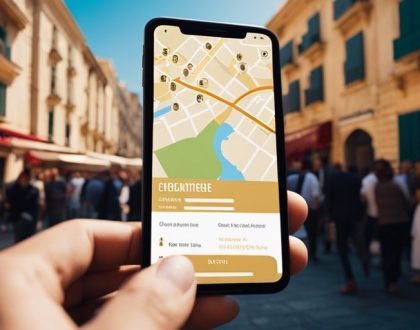Top 12 Website Design Guidelines

Are you looking to design a website that is optimized for SEO? If so, you’re in the right place. In this article, we will provide you with the top 12 website design guidelines that will help your website achieve better search engine rankings.
1. Make sure your site navigation is search engine friendly
Your website’s navigation can make or break your site’s SEO. If you use Flash for navigation, search engines will have a tough time crawling your site. Instead, use CSS and unobtrusive JavaScript to create the fancy effects you’re looking for without sacrificing your search engine rankings.
2. Place scripts outside of the HTML document
When coding your website, make sure you externalize JavaScript and CSS. If you don’t, your HTML documents will contain additional lines of code that will be ahead of the actual content, making crawling them slower. Search engines prefer to get to the content of a website as quickly as possible.
3. Use content that search engine spiders can read
Content is the backbone of a website, and it’s what search engines rely on. When designing a website, make sure to structure your content properly using headings, paragraphs, and links. Sites with little content tend to struggle in the search results, so plan your content accordingly.
4. Design your URLs for search friendliness
Search-friendly URLs contain keywords that describe the content of the page. Avoid using query strings or URLs that are hard to crawl. Instead, use URLs that make it easy for search engines to understand the content of your page.
5. Block pages you don’t want search engines to index
There may be pages on your site that you don’t want search engines to index, such as server-side scripts or pages that add no value to your content. To avoid duplicate content issues and dilution of your real content’s density, block these pages from web robots.
6. Don’t neglect image alt attributes
Make sure all of your image alt attributes are descriptive. Search engines read alt attributes and may consider them when determining the relevancy of the page to a searcher’s query.
7. Update pages with fresh content
Search engines love to see content on web pages changing from time to time, indicating that the site is still active. If your website has a blog, consider placing excerpts of the latest posts on all of your web pages. With changing content comes greater crawling frequency by search engines.
8. Use unique meta data
Every page should have its own set of meta data, including page titles and descriptions. When creating a website template, make sure to change out the meta data on each page to help search engines understand how the website is structured.
9. Use heading tags properly
Use heading tags in your web page content to provide search engines with information on the structure of the HTML document. Search engines often place higher value on these tags relative to other text on the web page.
10. Increase internal linking on your website
Internal linking helps Google understand your content better and creates an informational hierarchy for your website. Websites with relevant information are consistently correlated with each other, making it helpful for both people and search engine bots to find further information on the subject.
11. Make your website mobile-friendly
Mobile-friendliness is a primary factor in Google’s ranking algorithm. Thus, creating a mobile-friendly website is a must for webmasters and businesses. Ensure that your website is easy to use and navigate on mobile devices.
12. Improve your page speed
Nobody likes a slow-loading website. A website’s speed can directly impact your site’s rankings and lead generation. Make sure your site is optimized for fast load times to keep your visitors engaged.
Conclusion
Designing an SEO-friendly website takes careful planning and consideration. By implementing the top 12 website design guidelines, you can improve your site’s search engine rankings and increase the visibility of your content. Remember to make sure your site navigation is search engine friendly, place scripts outside of the HTML document, use content that search engine spiders can read, design your URLs for search friendliness, block pages you don’t want search engines to index, and don’t neglect image alt attributes. Additionally, update your pages with fresh content, use unique meta data, use heading tags properly, increase internal linking on your website, make your website mobile-friendly, and improve your page speed. These tips will help ensure your website is optimized for SEO and is user-friendly. If you need help with website design, don’t hesitate to reach out to our team for expert advice. We specialize in creating SEO-friendly websites that are optimized for fast load times and mobile devices.
FAQs:
- Why is it important to have an SEO-friendly website design?
Having an SEO-friendly website design can improve your site’s search engine rankings, increasing the visibility of your content to potential visitors. - What are some best practices for designing a search engine friendly website?
Some best practices for designing a search engine friendly website include using CSS and unobtrusive JavaScript for navigation, creating search-friendly URLs, using heading tags properly, and updating your site with fresh content. - How can I make my website mobile-friendly?
To make your website mobile-friendly, ensure that your website is easy to use and navigate on mobile devices, use a responsive design, and optimize your images and content for mobile devices. - How can I improve my website’s page speed?
To improve your website’s page speed, optimize your images and content, minify your CSS and JavaScript files, use a content delivery network (CDN), and consider using a caching plugin. - How can I optimize my website for search engines?
To optimize your website for search engines, focus on creating high-quality content, using relevant keywords, and ensuring that your website is user-friendly and easy to navigate. Additionally, make sure to implement the top 12 website design guidelines discussed in this article.
Recommended Posts

Overview of Business Finance in Malta
May 17, 2024

How to Start Your Malta Business Journey
May 17, 2024

WA.Technology Offers Centurion FC Odds
May 17, 2024



